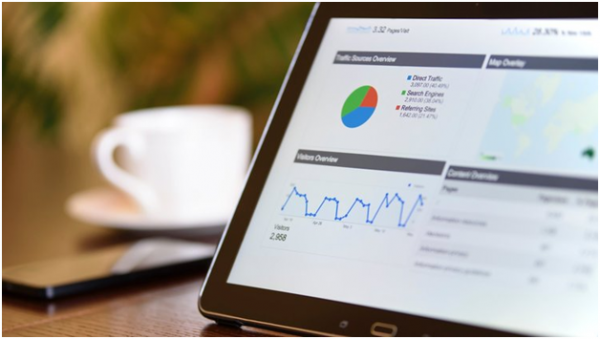SEO Signals – Google’s Ranking Factors
When you search Google for any topic or phrase—let’s say “the French Revolution”—Google returns an enormous set of page results, often numbering in the millions. They’re returning every page, video, and document on the internet that they think is relevant to that search query.
But how does Google decide in what order to show those results? It’s a hugely important question: studies show that about 90% of users don’t ever click past the first page of 10 results.
The obvious answer is that Google tries to lift up the best results. And they do so by looking at a number of characteristics about your web page and treating them as signals of its quality, popularity, trustworthiness, and relevance. Many different elements come into play, and the formula is ever evolving, but the SEO industry works hard to figure out what those factors are. This article will give an introductory overview of them, plus some actionable next steps to get you started on improving your own website’s search engine optimization.
HOW DOES GOOGLE’S ALGORITHM WORK?
If Google keeps their secret formula under wraps, how do we know what the factors are? Well, we don’t exactly. It’s murky territory. One way is from large-scale studies that analyze the correlation between generally accepted ranking factors and actual search results (studies conducted by experts at search companies like Moz, SearchMetrics, and SEMRush).
A study might look through tens of thousands of Google search results to determine which factors were most closely correlated with higher search rankings. For example, they might find that pages that included the searched-for query as part of the first
headline tag tended to rank higher than pages which did not include the term in the headline.
As with any study that looks only at correlation, it’s important to note that these do not prove which direction the causation goes, nor whether there in fact exists a causal relationship at all (remember, “correlation does not imply causation”).
As an example: we always see a positive correlation between site traffic and search rankings—pages that rank more highly are also visited more often. What’s the causation there? It might be that Google gives ranking preference to highly-trafficked sites (which Google knows from anonymous data collected by its Chrome browser, by data collected in Google Analytics, and by click data on actual searches). Or, more likely, it could be that the causation runs the other way—sites that get highly ranked subsequently receive more traffic. Or there might not be a direct causal relationship at all—it might be that pages with great, relevant content will simultaneously attain high search rankings and receive high traffic, both results caused independently by the quality of the content.
Point being, take all these ranking factors with a grain of salt and focus on what makes common sense. And in all things SEO, keep in the back of your mind at all times that Google’s primary goal is to bubble up the results they think provide the most value and and are most relevant.
SEO RANKING FACTORS
We won’t go through all 200+ factors here, but we’ll cover the big buckets.
PAGE CONTENT, SITE, DOMAIN
According to Google, the single most important thing you can do to improve your search ranking is to “make your site interesting and useful.” Easier said than done, right? Generally, you want to optimize a page for a single keyword or phrase, or at most a small set of keywords. Where and how often these keywords appear on your page matters a lot. (If you need a refresher on HTML tags, w3schools is a good reference.)
- Body copy and “keyword density” – The more often a word shows up in an article, the more likely that’s what the page is about. Beware, however: there’s such thing as going too far with this. When you “stuff” a page with your keyword too many times, Google reads this as spammy behavior that probably isn’t providing good value to a user. Use it at least a few times, but don’t go nuts. Also try to make sure the keywords show up in the first 100 words—that helps, too.
- Title – The title tag controls what displays in the browser tab itself. It is also what users see as the clickable headline in a search engine results page (SERP). Make sure to include the keyword(s) you’re targeting in the title.
- Headline – Always use H1 headline tags on your page, and make sure the keywords you’re optimizing for appear in the first headline.
- Page length – On average, pages that rank in the top 10 Google results have about 2000 words. It’s not a hard-and-fast rule, but this gives you a ballpark sense of what Google thinks “good content” looks like.
- Original content – If you’re copying and pasting content from another site (duplicate content), Google is onto you. They penalize you for exact content they’ve already seen elsewhere, and they reward you for fresh new content.
Additionally, certain factors about the rest of your website and about your domain name come into play.
- Domain age – Google gives more credibility to domains that have been around for a while, and domains which aren’t set to expire anytime soon. This differentiates them from burner domains often purchased by bad actors and used for short time periods.
- Domain name – Does your domain name contain the keyword you’re optimizing for? Extra points for that. Even better if the keyword is the first word in your domain. And better still if it’s an exact match of the keyword or phrase.
- Domain authority – How authoritative is your domain about your topic?
A few other content factors that come into play and are basically common sense:
- Use proper grammar.
- Watch out for broken links in your site.
- Use bulleted lists and numbered lists where that will help users absorb the content.
- Use breadcrumb navigation to help users get around your site.

BACKLINKS
Backlinks, or inbound links, are links to your page from other websites. One of the most impactful things you can do to improve your rankings is to get other sites to link to yours. This is arguably the most important ranking factor beyond the content that you directly control on your page. According to Moz, it’s likely more than half of the ranking factor weight.
Back in the mid 90s, tracking backlinks was Google’s major innovation. Rather than simply look at the page content, they also looked at how many other websites linked to you, using that as a measure of your page’s popularity. They called the algorithm PageRank (named after Google founder Larry Page, who developed it as a research project at Stanford University). This technical innovation launched Google ahead of its many competitors, and to this day backlinks are still a major signal of relevance. Quality backlinks are tough to fake, and the only reliable way to generate backlinks to your site is to create content that is so valuable and interesting that other sites actually want to link to it.
But it’s not enough to just have a million inbound links. It also matters which sites are linking to you. The factors discussed about above, which influence your own page’s ranking, also dictate how powerful it is for another site to provide backlinks to yours. The more authoritative and trustworthy a site, the more helpful it is to receive a backlink from them.
- Domain authority of linking site – A link from a major website like Forbes—which itself is considered an authoritative domain in part based on the number of inbound links from other domains—carries a lot more weight than a link from a small personal blog.
- Anchor text – It matters what the anchor text is (the text that’s actually clickable) that links to you. A text link that reads “click here” is less valuable than a link that reads “the French Revolution.”
- Position of the backlink on the page – Backlinks in the main body of an article are more powerful than backlinks in a footer or sidebar.
- Age of backlink – The longer a backlink has been around, the more relevance it is considered to have.
- Word count – It’s better to receive a link from a 2,000-word article than from a short snippet.

Create a free account and verify your domain to see the full results.
USABILITY AND USER EXPERIENCE
Google cares a lot about providing users with a great experience on the web. They want to reward pages that provide a great user experience.
- Page speed – Pages that load faster are given preferential treatment.
- Mobile optimization – Does your page look good and load well on mobile devices? This is increasingly important.
- Image optimization – Are your images optimized? Crop them to reasonable size dimensions, and then use JPG, PNG, or GIF compression to minimize the file size.

Google’s free mobile speed test
USER BEHAVIOR
Google basically owns the market for search. What’s additionally helpful for them (and unsettling for humanity) is how much else they own. Specifically relevant to our discussion here is that they also own a ton of market share in two other products that act as data-gathering tools: 1) the Google Chrome browser, and 2) Google Analytics, a free web analytics platform. Both provide Google with a wealth of information about how users interact with your site. Google is able to consider the following factors when determining how highly to rank your site:
- Click-through rate – When users see your page listed in search results, do they actually click it? What’s interesting here is that this means your

OTHER TECHNICAL ASPECTS
We won’t get too into the weeds on some of these more technical details, but a few are worth mentioning.
- HTTPS – Using the HTTPS secure protocol and having an SSL certificate are signals to Google that your site is trustworthy.
- Alt text – Adding alt text to your img tags is not only an accessibility best practice, it’s another way to add keywords to your page.
- Redirects – Excessive redirects can result in lost page rank. If you require a redirect from one URL to another, a 301 is the most appropriate type—it indicates that the page is “moved permanently” from its previous location.
- rel=canonical – Using “rel=canonical” helps Google know which page is the authoritative one if the same content exists on multiple pages of your site. This helps combat issues that can arise from having duplicate content.
- org – These “microdata” markup formats can help when they’re relevant: it’s things like star ratings for reviews, cooking times for recipes, author names for books, prices for products, and so on.
THIS FEELS LIKE A LOT! HOW DO I TACKLE IT ALL?
There are two ways to look at this. One is: look at all of the possible factors—the subset we’ve explained above, plus the remaining from the 200+ total—and do everything in your power to improve each and every one of them. This is a valid strategy, one employed by top-ranking sites.
Another answer is essentially Google’s answer: focus on writing good content that provides real value to actual users, organize the content well, and the rest will follow. If you’re writing an article about the French Revolution, then probably the term “French Revolution” already appears in your title, headlines, and page copy anyway. And if your article provides genuine value to users, then other sites about the French Revolution will eventually start linking to it (hopefully using anchor text like “the French Revolution.”) Users will spend time on your page, bookmark it, return to it, and recommend it to others.
There’s no magic bullet to increasing search rank. It takes time to think through which keywords you want to rank for (do some keyword research to find out how much competition there is for a given keyword). Ensure that your keyword appears in the right places on your page. Treat your site visitors respectfully. Get other sites to link to yours. And above all, take the time to make sure you’re releasing really great, valuable content into the world.
SEO TOOLS
Here are a few tools to get you started on your SEO journey.
FREE TOOLS
- Google Site Speed – See how fast your pages load and how well they’re optimized for mobile devices.
- Moz Domain Authority – Moz.com’s free tool measures how authoritative your domain is and who is linking to you.
- Google Analytics – Track traffic volume, time on page, bounce rates, interaction rates, and what channels are driving traffic to your site.
- Majestic – Another free backlink checker.
- Moz SEO Learning Center – Articles and how-tos for all aspects of search engine optimization.
- Google SEO Starter Guide – A great primer on how Google views your website.
PAID TOOLS
- Moz Pro – Track your search rankings and audit your site for potential problems.
- BrightEdge – Research keywords and Google search statistics.
- Ahrefs – Another keyword research and backlink checking tool.
- SiteImprove – Find broken links and typos on your site.
ADDITIONAL HELP
As always, we’re here to help! Reach out to a member of our team for help getting started with SEO, or to help with any specific SEO needs you may have.
